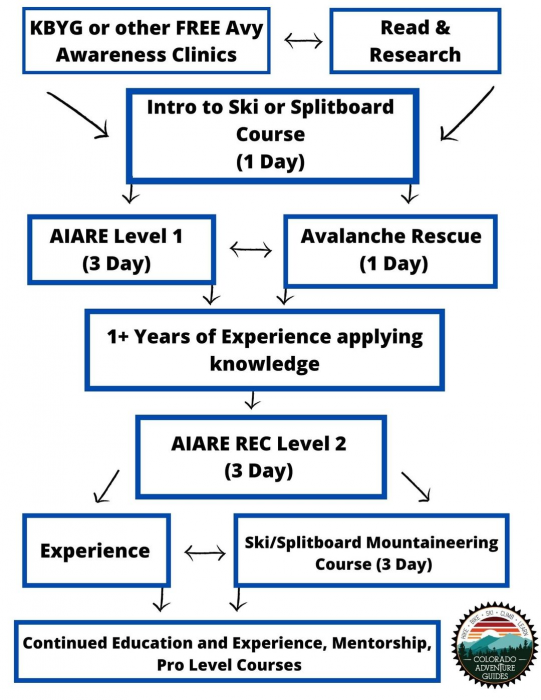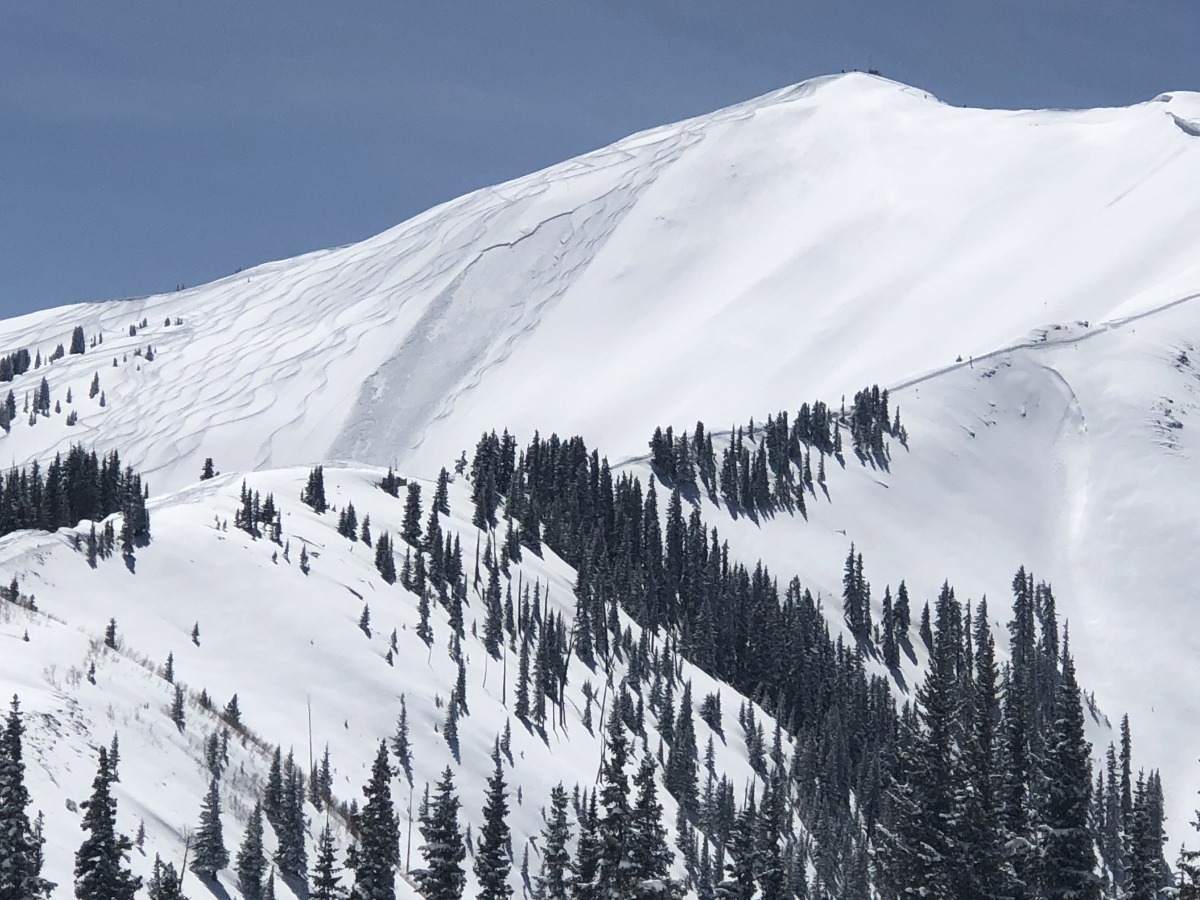In the not so distant past, avalanche resources were primarily offered to ski industry professionals. It wasn’t until the 1980s that recreational avalanche education began in earnest, and curriculum standards began to evolve.
Flash forward to 2020 and the number of avalanche education options has exploded, keeping pace with the feverish demand for touring gear. This neck and neck growth is good, and likely why, despite increased backcountry users over the past few decades, avalanche fatality rates are holding steady relative to growth.
To help readers sort through the options, we compiled a collection of resources. This is especially geared to the budding ski tourer, but offers something for seasoned backcountry travelers as well.
Get Started for Free
First things first. Would you pay a bunch of money for an advanced course without knowing how to use your gear? Probably not. But I’ve heard more than one story from avalanche instructors and attendees that in Level 1 courses, there is inevitably someone trying to slap on a pair of skins for the first time. Sounds distracting, at the least.
Breckenridge-based Colorado Mountain Guides put together the following flowchart to offer an ideal sequence of events for the budding backcountry skier. Note that the formal Level 1 avalanche course doesn’t take place until three other steps occur, including free courses, self education, and an introduction to using your gear.

A sample progression of avalanche education. Note the steps recommended before pursuing an avalanche level 1 course.
So, how about some free education resources to start?
Know Before You Go, offered through the Utah Avalanche Center and now Friends of CAIC, has long been a go-to resource for free introductory avalanche content. The video tutorials include topics like gear, training, reading a forecast, avalanche conditions and avoiding avalanche terrain. The website is also a launching point for additional resources.
Avalanche.org offers brief, accessible and free tutorials on fundamental information including gear, terrain and rescues, as well as links to avalanche conditions and course providers.
Colorado Mountain School’s introductory 1-hour avalanche awareness course.
A growing number of community organizations like Friends of Berthoud Pass offer free introductory course material. Many avalanche forecasting organizations do as well, including Northwest Avalanche Center, Avalanche New Zealand, and Avalanche Canada.
In the pre-Covid days, in-person free introductory courses were more of a thing. Fingers crossed they’ll come back soon.
Backcountry travel courses
It’d be great if we all had a dad, mom, cousin, friend, etc. to teach us the ropes, but that’s not always the case.
Intro to backcountry skiing and splitboarding courses are growing in popularity among guide services and community organizations. These courses are akin to taking ski lessons — how to step in/out, transitions, putting skins on/off, skinning techniques — without the added dynamics of a backcountry environment and partners who are chomping on the bit to get the goods.
In Colorado alone there are numerous options for intro courses, including ones offered through the aformentioned Colorado Adventure Guides, our local Aspen Expeditions, Colorado Mountain School and more. Check out your local guide service (or ask at your local ski shop) to see what they offer.
Bluebird Backcountry, the backcountry only ski area in norther Colorado that debuted last season, offers the whole package of intro material. From very basic initial intro courses, to avalanche courses and guided days, they have a suite of options for the newb ski tourer.
Speaking of guides, a few weeks back we published a piece on the merits of hiring a guide. There’s a reason we have many guides (including Rob Coppilillo, Jed Porter, Nate Goodman, Nate Rowland, Slator Alpin, Jonathan Cooper, Sarah Carpenter, and more) contributing regularly to this site. A day out with a guide can offer a wide ranging educational experience and the opportunity to learn more than you maybe realized you needed to. 57 Hours is a useful resource for finding guides, as is the AMGA website.
Full Courses
The next step in the sequence is deeper, more involved education. Full (typically three day) avalanche courses offer in-depth information, access to instructors and a community learning environment.
Online
Many course providers including AIARE and AAI are offering portions of their avalanche courses online this season. This replaces the classroom portion of courses but still supplements with hands-on learning in the field.
Mountain Sense’s Comprehensive Guide to Avalanche Safety is a thorough, self-paced course featuring some 70 hours of material.
In-person
Field sessions are still a crucial element of avalanche safety. No online resource can replace the tactile experience of practicing searches, digging pits, and pinpointing avalanche terrain and conditions under the gaze of a trained instructor. These options are typically split into recreational and professional curriculums, which each have two levels of courses: Level 1 and Level 2 for the recreational track, and Pro 1 and Pro 2 for the Professional track.
You’ll see two national organization names when you’re looking into courses.American Avalanche Association (A3) publishes guidelines for curriculum. AIARE develops curricula to meet those guidelines, and trains instructors to teach AIARE specific courses. It’s a common misconception that AIARE the only course provider, but other providers that don’t designate AIARE typically teach to A3 guidelines. See a full list of A3 providers here.
Check out our post that breaks down the different course levels.
Forecasting centers
Getting accurate avalanche conditions means keeping tabs on what’s happening in the zone where you ski. Avalanche.org offers a detailed map of forecast zones throughout the continental US and Alaska, as well as a list of forecast centers.
Scholarships
Avalanche education is an investment but that shouldn’t prevent people from pursuing it. Below is a small sampling of available scholarships. Check your local course provider to see if they offer financial assistance.
Sierra Avalanche Center
She Jumps Snowpack Scholarship (ladies only)
George Dirth Memorial Scholarship Fund
Friends of CIAC Forecast Pledge While not a scholarship per say, signing the pledge before December 1 puts you in the running to win a free spot in a level 1 or 2 course.
Read WildSnow!
Okay, tooting our own horn a little bit here. There are decades worth of avalanche content on this site, which you can access in the toolbar or this link including Paul Diegel’s comprehensive avalanche resource from last season which offers additional insight into videos, podcasts and more.
Readers: What did I miss? Leave your resource recommendations in the comments.
Manasseh Franklin is a writer, editor and big fan of walking uphill. She has an MFA in creative nonfiction and environment and natural resources from the University of Wyoming and especially enjoys writing about glaciers. Find her other work in Alpinist, Adventure Journal, Rock and Ice, Aspen Sojourner, AFAR, Trail Runner and Western Confluence.

